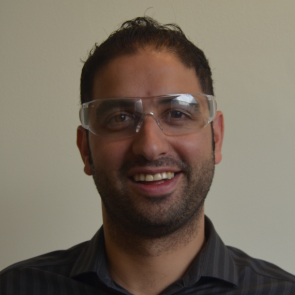In this presentation, the new XEVO TQ GC, GC-MS/MS system is introduced and a sensitive, multi-class method for the routine determination of pesticide residues in QuEChERS extracts of various fruit and vegetables is described.
Pesticide residues remain high on the list of consumer concerns around food safety and as a consequence laboratories are required to screen samples for as many pesticides as possible in a single analysis, within a suitable timescale. The majority of countries have clearly defined regulations governing pesticide residues, with legislation imposing Maximum Residue Limits (MRLs) for pesticide residues in food commodities, requiring analytical techniques that are sensitive, accurate, and robust. Multi-residue analysis is challenging due to the low parts per billion limits of detection required to achieve MRL compliance for a diverse range of pesticides in a wide range of commodities.
There are currently in excess of 1000 pesticides known to be in use, and laboratories are under increasing pressure to increase the scope of the analytical methods for routine monitoring purposes. Various technologies are used to meet this challenge, the most common being liquid chromatography (LC) and gas chromatography (GC) coupled to tandem quadrupole mass spectrometry. Implementation of these techniques allows the laboratory to cover a range of compounds with varying chemistries as required by legislation.
The Presenter
 Adam Ladak
Adam Ladak
(Senior Strategic Scientific Marketing Manager, Food and Environment Business Operations,
Waters Corporation, Milford, Massachusetts, USA)
Adam Joined Waters in 2008 as part of the mass spectrometry application lab. As Senior Strategic Scientific Marketing Manager he works closely with the scientific team to generate application data in the food and environment arena. Adam also assesses scientific projects for the viability and business impact. His role involves working with Waters' labs worldwide and visiting Waters' customers to conduct mass spectrometry focused seminars. Adam also attends conferences internationally to present data from the food and environment scientific team.
Adam has worked in mass spectrometry for over 12 years. Before joining Waters he worked at the Horse Racing Forensic lab (HFL). He held the position of the client manager for the supplement and feed team in the drug surveillance group. The team was responsible for the testing of sports supplements and equine feeds for prohibited substances. The role included developing extraction and analytical methods for GC-MS and LC-MS.
Adam joined Waters as part of the MS application team focusing on GC-MS analysis. This included performing customer demonstrations on GC magnetic sectors, tandem quadrupoles and time of flight instruments. Adam transferred to the US application lab in 2011 where he focused on Tof technology, ion mobility and atmospheric pressure GC for food, environmental, chemical materials, metabolomics and metabolite identification application. He joined the food and environment business operations team in 2015.
Adam has a degree in forensic science from the University of Glamorgan (South Wales).
